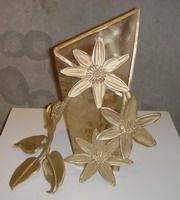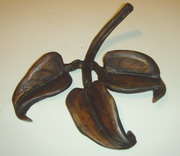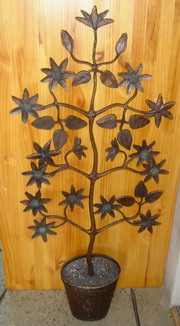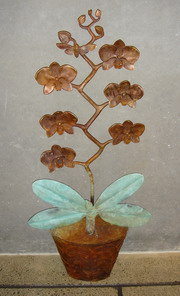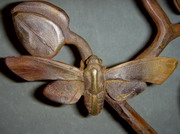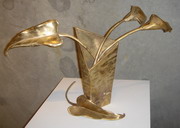| Art by Liz Grant |
|
|
| Home |
Bronze
Gallery |
| About the Artist | |
| Bronze Gallery | |
| Paintings | |
| Drawings | |
| Location | |
| Contact the Artist |
| ‘Kakapowai
II’ (2003) 260 x 90mm, height 500mm Again, a passing moment is captured when a giant dragonfly lands on top of a taurapa or waka stern, as it moves down a river. |
‘Feather
Box, Papahou’
(2003) 410 x 190mm, height 105mm A play upon words. Another name for a treasure box (or wakahuia) is a feather box. Here, the box is literally constructed of feathers and the treasures contained are three huia eggs. Treasure boxes with a North Auckland provenance are rectilinear as opposed to the more ‘usual’ oval wakahuia and are termed papahou. |
|
‘Te
Ao Marama, The World of Light’
(2004)
350 x 260mm, height 450mm This piece is an interpretation of the separation story of Ranginui, the sky father, from the earth mother, Papatuanuku, and the subsequent entering of light, growth and knowledge into this world. The event of light’s passage, is represented by the takarangi or double spirals. Papa, is represented by the upper edge of a puipui, and the lower taniko edge of a kaitaka, represents Rangi. The
two parents lay in a perpetual embrace. Between them, lived their children
within the world of night, or Te Po. Over time however, the children
fidgeted and grew restless in this world of darkness, and eventually
decided they must separate their parents. The children were, Tangaroa,-God
of the sea, Tumatauenga,-God of man and war, Rongomatane,-God of agriculture,
and Tane,-God of the forest, birds and other animals. Each tried in
vain to push apart the lovers, but it was the lateral thinking and resourceful
Tane, who thought to place his shoulders down onto the earth mother
and push up with his legs, and finally brought about the separation. |
|
'Kokopu'
(2004) The native giant kokopu is a member of the galaxiidae family and lives in slow moving fresh water streams. It is also one of the whitebait species. |
||
|
'Whisp'
(2005) |
||
'Clematis in a Pot' (2006) (below far right) 530 x 111mm, height 1021mm. Maori women often wove the flowering vines of Clematis paniculata, or Puawānanga, into a wreath to wear on the head. The design of this sculpture and the ones below reference the plants in pots on the walls of Rongopai on the East Coast. |
|
|

